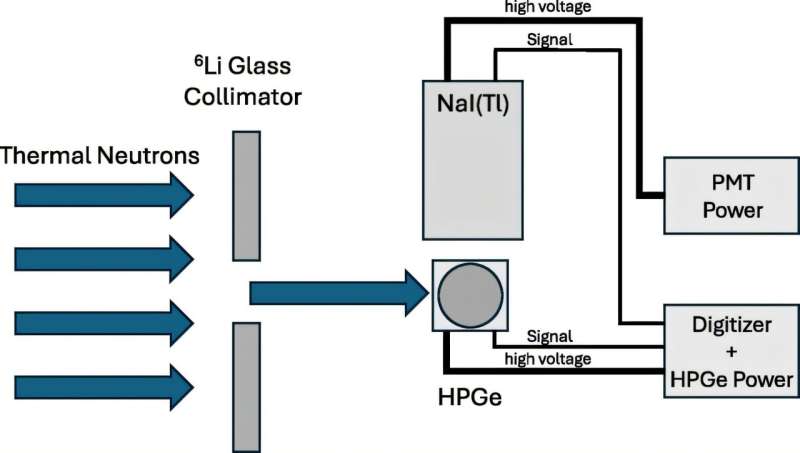
November 4, 2024 by Patricia DeLacey, University of Michigan College of Engineering
Collected at: https://phys.org/news/2024-11-detector-sensitivity-neutrinos-dark-latest.html
Fine tuning an experimental setup improved a detector’s sensitivity to neutrinos and perhaps eventually dark matter—two difficult-to-measure forms of matter which hold great importance for understanding particle physics and experimental cosmology. The University-of-Michigan-led study is published in Physical Review D.
The trouble with detecting neutrinos and dark matter lies in their weak interaction with other forms of matter.
Neutrinos—tiny, subatomic particles produced in nuclear reactions in the stars and by radioactive decay—only rarely interact with other matter through weak nuclear forces. Typically, neutrinos pass straight through visible matter, earning the nickname “ghost particles.” These neutrally charged particles do not interact with electromagnetic forces, and they only weakly interact with gravity as their mass is around ten million times less than an electron.
Neutrinos can be detected through nuclear recoil. When trillions of neutrinos are directed at atoms, a rare collision between a neutrino and an atom can occur. This causes the nucleus to recoil and pushes electrons of nearby atoms out of orbit. Applying a voltage across the detector and recording ionization energy reveals neutrino collisions.
Similarly elusive, dark matter exerts gravitational force upon visible matter but does not absorb, reflect or emit light. Researchers are actively working to create and detect dark matter, thought to be the “glue” holding galaxies together, to better understand the formation of the universe.
Although dark matter has not yet been detected on earth, hypothetical particles called Weakly Interacting Massive Particles (WIMPs) are expected to cause nuclear recoil similar to neutrinos.
Once only able to be detected in massive underground facilities, commercially available high purity germanium detectors, or HPGe detectors, just a few inches long are now able to detect weak nuclear recoils. These compact detectors leverage the heavy metal’s large nucleus to increase the probability of collisions while cooling the detector to 77 Kelvin (about -196 ℃) to minimize signal noise from atomic vibrations.

To accurately detect these tiny disturbances, detectors must first measure and understand nuclear recoils under a neutron beam to ensure proper calibration.
“Radiation is the means by which we observe the universe, be it in the Large Hadron Collider, dark matter experiments or nuclear experiments. Understanding how that radiation interacts with matter greatly impacts our ability to interpret measured results,” said Igor Jovanovic, a U-M professor of nuclear engineering and radiological sciences and senior author of the study.
The research team performed an experiment measuring the response of germanium nuclei to 254 electron volt (eV) nuclear recoils, or about one fourth of a keV, as nuclear recoils to lower energy neutron beams are poorly understood. Two previous experiments measuring nuclear recoil at the same energy had conflicting ionization yields.
The experimental setup used a two cubic centimeter HPGe detector and an external sodium iodide (NaI) scintillation detector to measure ionizing radiation from nuclear recoils. To reconcile previous experimental differences, the researchers saved the raw output from both the HPGe and NaI detector using improved digital electronic recording devices.
Using the raw output improved shaping analysis, removing any signal processing biases, and allowed the same data to be analyzed using multiple algorithms to find the optimal method.
Results yielded a 50% higher ionization yield compared to a previously established theory, dramatically increasing the sensitivity of high purity germanium detectors to dark matter or neutrino detection.
“Our results could greatly improve the sensitivity of commercially available detector technologies for neutrino detection and impact the results of several ongoing neutrino experiments,” said Alexander Kavner, a U-M doctoral graduate in the Applied Physics Program and lead author of the study.
Experimentation was conducted at The Ohio State University Nuclear Reactor Laboratory.
More information: A. R. L. Kavner et al, Measurement of ionization produced by 254 eVnr nuclear recoils in germanium, Physical Review D (2024). DOI: 10.1103/PhysRevD.110.083043. On arXiv: DOI: 10.48550/arxiv.2405.10405
Journal information: Physical Review D , arXiv

Leave a Reply